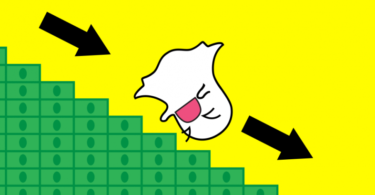With everything the stock market’s dealing with, the most cumbersome and potentially dangerous thing it’s facing right now, which could break the market’s back, is increasing correlation.
Correlation is a simple phenomenon. It’s when different markets, different asset classes start acting the same and moving together.
When correlation picks up in a bearish environment, meaning more different asset classes start moving down together, something very bad can happen.
We’re not in a bear market. Not yet. But we could get there – several asset classes could get there quickly.
That’s my biggest fear right now.
Now, the stock market is in a dicey position, to start with.
All the leadership stocks, principally the FAANG stocks, that propelled markets higher for years, have all rolled over. Several of them are already in bear markets.
A correction is a 10% move down from a recent high, or an all-time high. A stock enters a bear market when it falls 20%.
Here’s what you should be watching out for…
The FAANG Stocks are Flirting with the Bear Market
Facebook Inc. (NasdaqGS:FB) is in a bear market. It’s down more than 35% from the all-time high it reached in July this year.
Amazon.com Inc. (NasdaqGS:AMZN)’s down 20%.
Netflix Inc. (NasdaqGS:NFLX) is down 30%.
Apple Inc. (NasdaqGS:AAPL) and Google’s parent company, Alphabet Inc. (NasdaqGS:GOOGL) are flirting with the 20% bear market line in the sand.
[CRUCIAL] Which Pot stocks are a must buy?
More stocks have been making 52-week lows than 52-week highs for months now. Fewer and fewer stocks are getting anywhere near making new highs. The momentum has completely changed for them.
There are lots of reasons investors may be taking profits and pulling cash out of the stock market.
They include fears that earnings have gotten as good as they can get, profit margins have gotten as good as they can get, the bull market has run as far as it can get, and the business cycle can’t continue much longer.
In other words, psychology has changed.
One of the principal reasons psychology has changed is that the fundamental bull market whip that’s driven stocks higher for years has finally stopped cracking.
The Federal Reserve’s been raising interest rates, as opposed to doling out what many investors considered “free money.”
That means bond prices have been falling. Bond prices fall as interest rates rise because investors (who are interested in buying new issues with better interest earning power) won’t pay the same price for old bonds that don’t yield as much.
So, holders of those lower-yielding bonds, if they want to sell them, must lower the price they’ll take to some level where their old bonds are “yield competitive” with new bonds coming to market.
The more interest rates rise, the more existing bond prices fall.
While that hasn’t been happening in the Treasury bond market for mechanical reasons – including “flight to quality” runs into Treasuries when markets are selling off – it’s been happening to all other categories of bonds including corporate bonds and junk bonds.
Spreads have been widening on investment grade bonds. That’s a sign that prices of investment grade bonds are falling. Spreads refer to the difference, or spread, in yield between any kind of bond and its equivalent maturity Treasury bond, note or bill.
The spread on junk bonds just reached a 19-month high last week.
In other words, bond prices are falling as stock prices are falling. That’s one huge correlation.
[Keep Reading] Boehner: Three events will transform marijuana forever
It Doesn’t Stop There
Oil’s been falling as stocks have been falling.
West Texas Intermediate (WTI) crude oil fell 7% in one day in November, knocking the per barrel price of WTI down to $55.69 from $70 only a month prior.
Commodities, in general, have been slipping as stock prices have been falling. Higher interest rates hit commodity prices as carrying costs, planting costs, and harvesting and storage costs increase with higher rates. That’s more correlation.
Residential real estate prices may have peaked in some hot markets recently and sales have slowed as mortgage rates have ticked higher. That’s more potential correlation.
Even gold has fallen over the past year, sliding from $1,350 down to $1,221.
The problem with correlation – different asset classes acting together and especially moving down together – is that any steep selloff in one triggers selling in others.
That can generate a nasty negative feedback loop, especially if margin calls in the stock market cause investors to sell other assets and selling those assets scares investors in those asset classes, who sell and can trigger margin loan calls elsewhere.
The most vicious rounds of selling of correlated assets happened in 2008. We all remember what happened to stocks then.
I’m not saying we’re anywhere near there. But, increasing correlation is becoming an increasing worry.
But the thing to keep in mind with a bear market is that it doesn’t mean that your ability to profit is completely snuffed out.
In fact, there are times that your profit potential can be increased…







